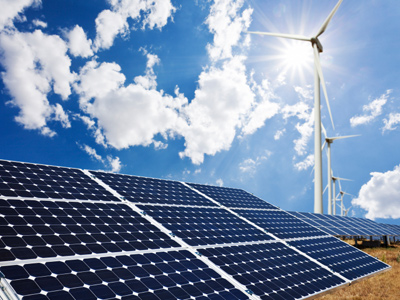
Physics - Electricity from the Sun, Wind and Water (AQA)
In GCSE Science students will spend some time looking at electrical energy. This is the fourth of six quizzes on that topic and it looks at how electricity can be generated from renewable resources, such as the Sun, the wind or water.
In conventional power stations, an energy source is used to heat water to make steam. The steam produced drives a turbine that is coupled to an electrical generator. Most of the energy sources create pollution and are non-renewable, and these are two big disadvantages.
Scientists and engineers have developed other ways of generating electricity from renewable and non-polluting energy sources. Water and wind can be used to drive turbines connected to generators and electricity can also be produced directly from the Sun's radiation. In some areas of the world, for example Iceland, volcanic activity creates hot water and steam. The steam can be piped to the surface of the earth where it can be used to drive turbines connected to generators.
Convection _________ in the Earth's atmosphere give rise to the wind. These are created by ______ energy from the Sun warming up the surface of the Earth. Wind _________ have large blades that are connected to gears linked to a __________. The _________ energy of the wind is transferred into electrical energy.
Ready for more?
not all...
quizzers. Try to win a coveted spot on our Hall of Fame Page.







